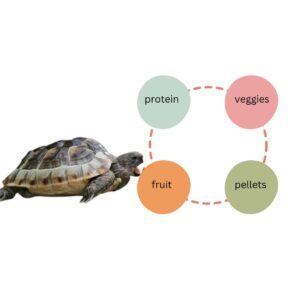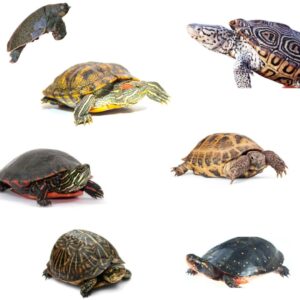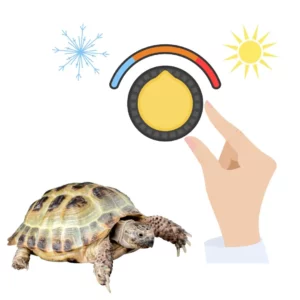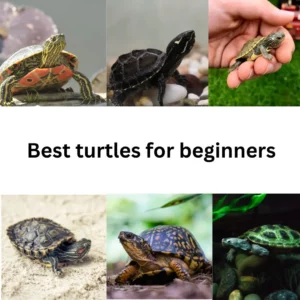Aquarium sand is one of the safest substrates for a turtle tank.
Unlike other substrates, sand:
- is small enough for your turtle’s tract if they accidentally mistake it for a snack
- can completely cover the bottom of your tank, isolating waste, harmful bacteria, and other debris
- adds beautiful scenery to your turtle’s environment
So, I’ve listed some of the best sand for turtle tank to help you find the right one for your turtle(s).
Let’s dig in!
Best Sand for Turtle Tank
| Sand | Price | Check the sand |
| AquaNatural Sugar White Sand | $16.99 | Check the sand |
| Carib Sea ACS05820 Super Natural Moonlight Sand | $9.00 (currently on sale) | Check the sand |
| AquaNatural Galaxy Sand | $16.99 | Check the sand |
| Exo Terra Riverbed Sand | $15.99 | Check the sand |
| Zoo Med Vita-Sand | $10.99 | Check the sand |
| Reptile Sciences Terrarium Sand | $16.02 | Check the sand |
Table of Contents
AquaNatural Sugar White Sand: a popular choice
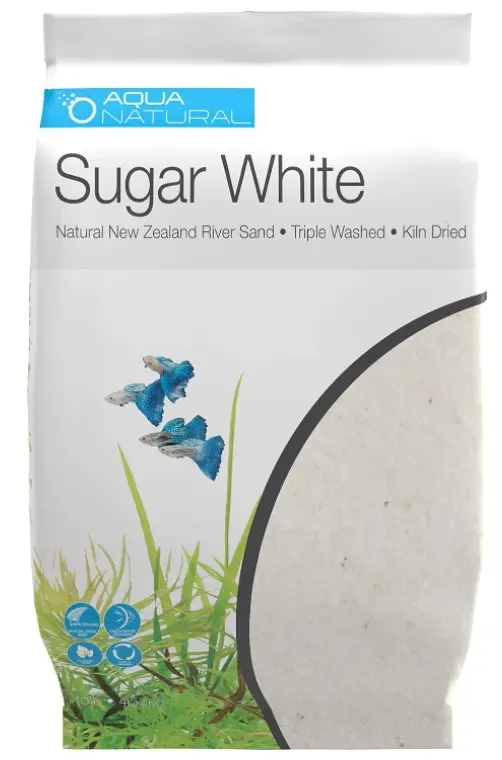
AquaNatural Sugar White Sand is one of the most popular substrates and is currently Amazon’s best-seller sand for turtle tanks. It’s well-known for its aesthetic appeal and versatility.
Here are some key features that make this sand our favorite choice:
- Aesthetic Appeal: Common and tends to be plain, boring, and skin-colored. But it’s a bit different with AquaNatural’s Sugar White sand. Its unique off-white color and texture enhance the overall visual appeal of your tank, providing a vibrant and attractive substrate for your aquatic or reptilian companions.
- Contrast with plants: The substrate’s color perfectly matches aquatic plants and creates a picturesque environment.
- Versatility: Suitable works for various setups, including aquascaped aquariums, vivariums housing amphibians, and terrariums for reptiles, making it a versatile choice regardless of whether you keep only turtles in a tank or some other pets as well.
But keep in mind that due to its smaller grain size, this sand could cause cloudiness in the water if you have an adventurous turtle (Slider turtles, for example) and a lot of algae eaters.
Price: $16.99
Check the sand here.
Carib Sea: pH-neutral option
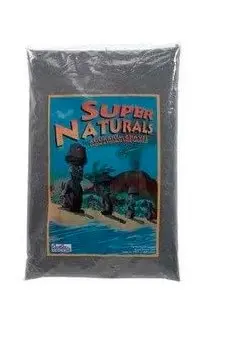
If you own an aquatic turtle, you need sand that won’t disrupt the water’s chemical balance. This is where the Carib Sea Sand comes in, as it is an all-natural sand that meets these requirements.
One of the advantages of this sand is its fine texture. It’s free from chemicals and dyes. Carib Sea Moonlight sand also has a neutral pH, making it an incredibly versatile substrate for salty and freshwater environments.
This substrate is available in a natural white color, providing a refreshing beach-like ambiance to your tank.
On the other hand, the sand particles are quite small and granular, potentially causing cloudiness in your tank with excessive movement.
Price: $9.00 (currently on sale)
Check the sand here.
AquaNatural Galaxy Sand: environment-friendly choice
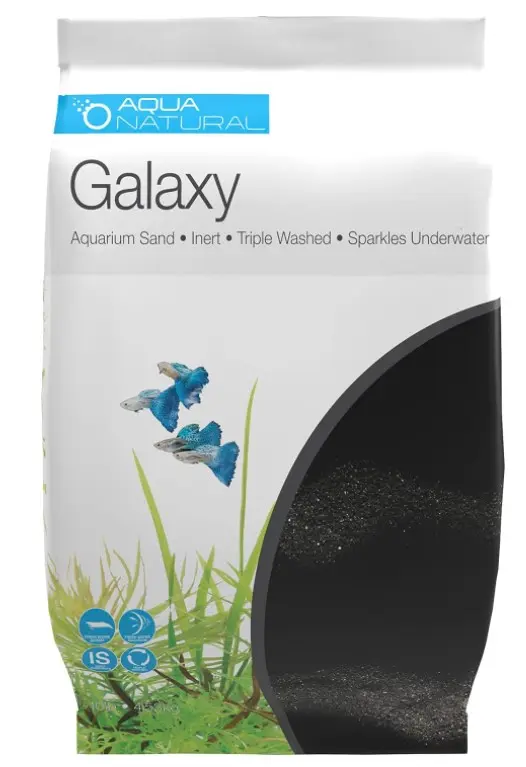
The Galaxy Sand offers a sleek and stylish look with its fine black texture, enhancing the visual appeal of the tank and adding that unique, distinguished appearance.
One of Aqua Natural’s Galaxy sand’s best positives is its coloring and type. This black-colored, quartz-based sand improves sunlight (UVB lighting) exposure underwater, making it an excellent choice for pet turtles who enjoy a bit warmer temperature and basking.
Unlike other, low-quality quartz sand, this one is sustainably and ethically sourced under license in the USA, ensuring environmentally conscious practices – a great way to maintain your turtle’s habitat healthy with an eco-friendly product.
Besides turtle tanks and terrariums for reptiles, Galaxy sand by Aqua Natural is also suitable for other setups, including aquascaped aquariums, vivariums for amphibians, etc.
Price: $16.99
Check the sand here.
Exo Terra Riverbed Sand: best for burrowing
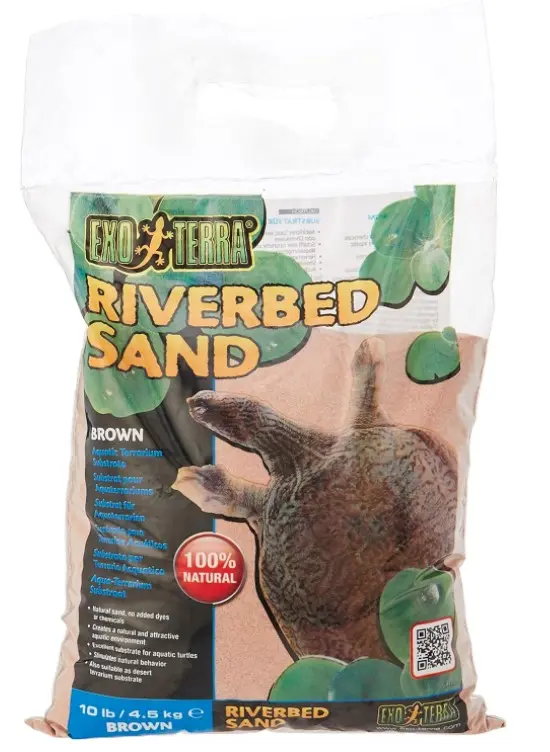
Riverbed Sand is the perfect choice for aquatic turtles as it resembles their natural habitat – especially for freshwater turtles.
It’s particularly great for soft-shell turtles who enjoy digging and burrowing in the fine sand. Also, these turtles have more sensitive exteriors, so Exo Terra Riverbed sand won’t harm their delicate skin.
This sand is completely natural and doesn’t contain any dyes or chemicals. The grain size allows easy swallowing if ingested, unlike gravel or pebbles, which can cause digestive issues and other serious health problems like impaction (intestinal blockage).
You can find Riverbed Sand by Exo Terra in a convenient ten-pound bag, with plenty of sand for most turtle tanks (up to 100 gallons).
Price: $15.99
Check the sand here.
Zoo Med Vita-Sand: calcium boost
This is a natural vitamin-fortified and calcium-enriched sand substrate. It doesn’t contain any artificial colors or color sealers. The texture and grain size make this sand excellent for soft-shell turtles and turtles who prefer spending more time on land and digging, burrowing, etc.
It’s fortified with vitamins and beta-carotene, critical for their health. For instance, beta-carotene is a substance found in food that the turtle system converts to vitamin A in the body, providing your pet with the vitamin A they need to be healthy.
Some similar low-quality sands tend to have fat-soluble vitamins, which can be toxic if eaten in large doses. However, Zoo Med vita-sand is free of that kind of vitamin, giving you peace of mind if your turtle mistakes the sand for a snack.
Price: $10.99
Check the sand here.
Reptile Sciences Terrarium Sand: dry spa
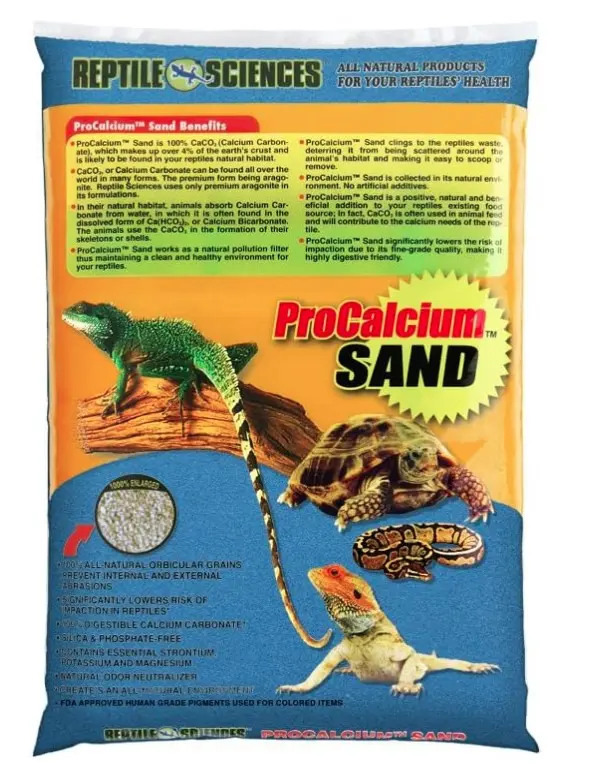
Terrarium sand by Reptile Sciences is a good choice if you have a turtle that doesn’t need a water-filled tank. It’s a great sand substrate for turtles that spend most of their time on a dry surface and only occasionally splash around or rest in shallow waters – for example, the Common Musk turtle or Eastern Box turtle.
This sand consists of 100% premium quality aragonite – a form of calcium carbonate that is safe and beneficial in case of consumption. Its texture helps cling to your turtle’s waste, preventing it from being scattered and making it easy to scoop it out and clean the tank.
Price: $16.02
Check the sand here.
Which Sand Is the Best?
| Sand | Softness/Comfort | Easy to clean/maintain (large grain = easier) | Cloudiness (smaller grain = higher chance) | Aesthetics | Overall score |
| AquaNatural Sugar White Sand | 5.0 | 5.0 | 4.9 | 4.8 | 4.9 |
| Carib Sea ACS05820 Super Natural Moonlight Sand | 4.8 | 4.8 | 5.0 | 4.8 | 4.8 |
| AquaNatural Galaxy Sand | 5.0 | 4.8 | 4.6 | 4.7 | 4.7 |
| Exo Terra Riverbed Sand | 4.7 | 4.7 | 4.6 | 4.8 | 4.7 |
| Zoo Med Vita-Sand | 4.7 | 4.7 | 4.6 | 4.6 | 4.7 |
| Reptile Sciences Terrarium Sand | 4.7 | 4.5 | 4.7 | 4.6 | 4.6 |
How to Choose the Right Sand for Turtle Tank?
Grain size matters: Opt for fine-grain sand to prevent potential impaction issues in turtles. Coarse or sharp sand can pose a risk if ingested. Aim for a grain size between 0.5 to 1.5 mm.
Pro tip: Don’t get the sand that’s way too fine, as it can lead to ‘’water cloudiness’’ in your turtle tank.
pH Compatibility: Ensure the sand is pH-neutral for freshwater and saltwater turtle tanks. Maintaining a stable pH is essential for the overall health of turtles. Choose sands labeled as inert or with a neutral pH to create a turtle-friendly environment.
Non-toxic and clean: Prioritize sand that is non-toxic and free from contaminants. Avoid sands with added dyes or chemicals, as these can harm your turtle. Choose a reputable brand and go for sands labeled as aquarium-safe to ensure your pet’s clean and healthy environment.
Ease of cleaning: Select sand that is easy to clean and maintain. Sand’s smooth texture makes waste removal more efficient and helps clean the tank. Regular cleaning is essential to prevent the buildup of debris and maintain water quality for your turtle.
The Benefits of Using Sand as a Substrate
Now that you know the best sand for a turtle tank, you may wonder what benefits sand provides as a substrate.
Here are some key benefits of using sand as a substrate in a turtle tank:
Lowered risk of impaction
Natural habitat imitation: Turtles thrive in environments that mimic their natural habitats. Sand allows for natural behaviors like digging, burrowing, and nesting. It provides a more enriched environment, promoting mental and physical well-being.
Cleaner tank: Sand contributes to a cleaner tank by isolating debris such as waste. It makes waste removal more manageable and helps maintain water quality. This benefit is crucial for the overall health of your turtle.
Better aesthetics: From an aesthetic standpoint, and offers a more natural and visually appealing substrate. It complements the aquatic environment, creating a pleasing aesthetic you and your turtle will enjoy.
My Senior Paws is a participant in the Amazon Services LLC Associates Program, an affiliate advertising program designed to provide a means for sites to earn advertising fees by advertising and linking to Amazon.com. We also participate in other affiliate programs which compensate us for referring traffic.

